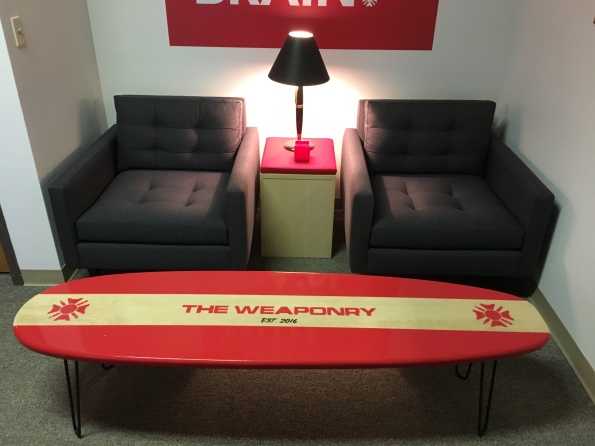I got a unique phone call this week. The caller, a friendly and energetic young man, introduced himself as a banker calling from Name-Of-Bank-Protected. Once upon a time, I had banked with Name-Of-Bank-Protected. But now I was confused. Because I had closed my account with them over ten years ago. What was even stranger, was that the banker added that he was a mortgage specialist.
Hmm?
I asked the nice mortgage specialist from the bank I once banked with, ‘Is there something wrong with the mortgage I clearly do not have with your bank?’
He laughed and said ‘No. I am calling about Name-Of-Employee-Protected. Does Name-Of- Employee-Protected work at The Weaponry?’
Then I understood.
I have purchased four homes in my home purchasing career. Right before the closing, the bank offering the mortgage calls your employer to confirm that you actually have the job you claim to have. This gives the bank confidence that you will have the funds to pay your mortgage on the new home. This has always been a wise move for banks. But it has become standard practice since the failure to do background checks lead to the world-melting mortgage crisis a decade ago.

However, this was different.
Now a bank was calling me about a mortgage, because I am the employer. This may not seem like a big deal to you. But this was monumental to me.
My advertising and idea agency, The Weaponry, started as a vision in my head two and a half years ago. I had a clear vision of what the perfect advertising agency would look like. I believed I could create an agency that generated excellent creative ideas, provided amazing customer service and offered a fun experience for everyone involved. Best of all, I knew it could provide long-term financial stability for employees.
As I started on my journey to bring that vision to life, I started this blog. Then brick by brick, the vision has become realer and realerer and realererer.
Today, The Weaponry has great clients, a nice office, amazing employees and benefits. But now, we also have real American bankers calling The Weaponry to confirm that our Weapons actually work at The Weaponry.
That’s a great feeling.
The Weaponry is not just real in my head. It is real in the eyes of a bank that will offer a major loan to one of our employees today, so that they can close on a new house this afternoon. I’m not sure I can articulate how fulfilling that is. The Weaponry has come a long way. And we are just getting started. I look forward to many more confirmation calls from many more mortgage lenders from across the country in the years ahead.
*If you would like to follow our journey, please consider following The Perfect Agency Project by clicking the subscribe button. It requires minimal effort from one of your fingers. Any finger will do.































